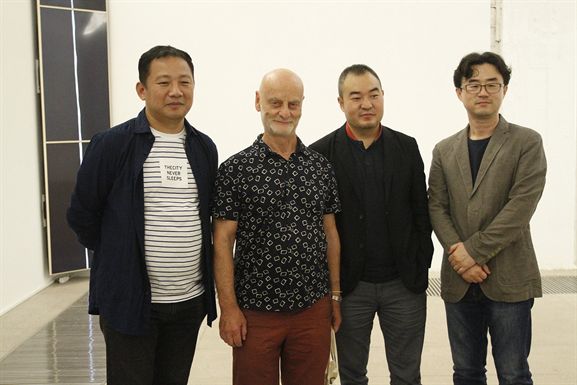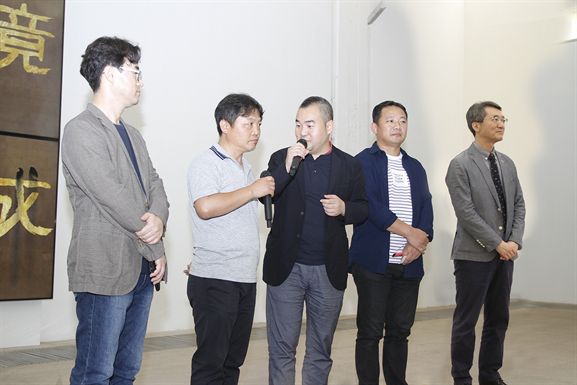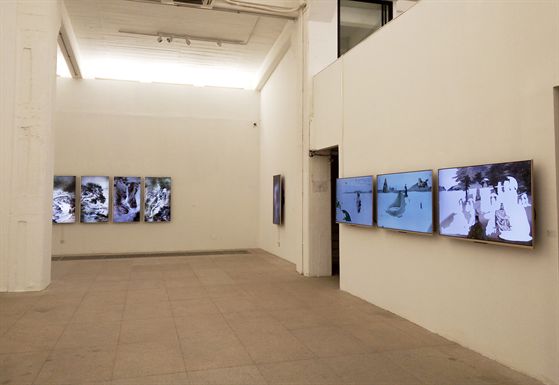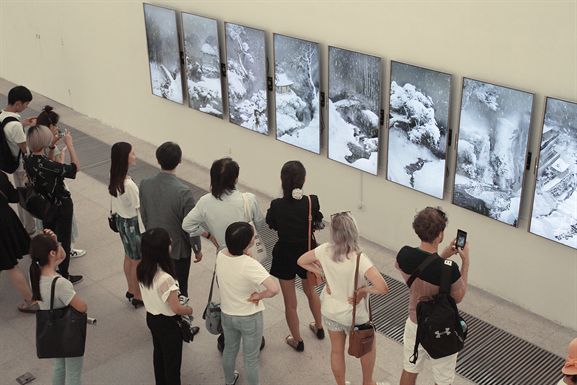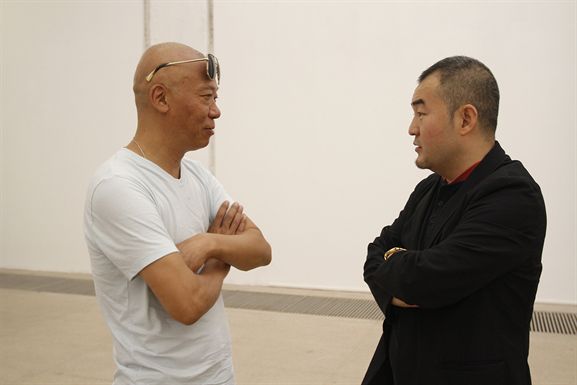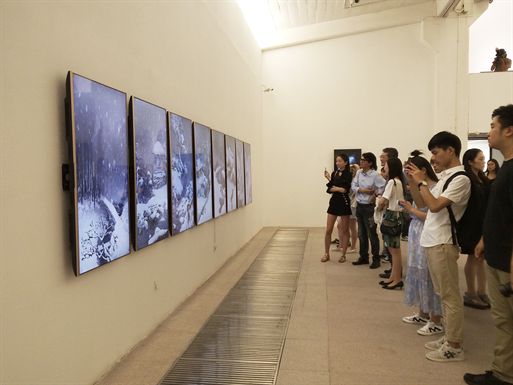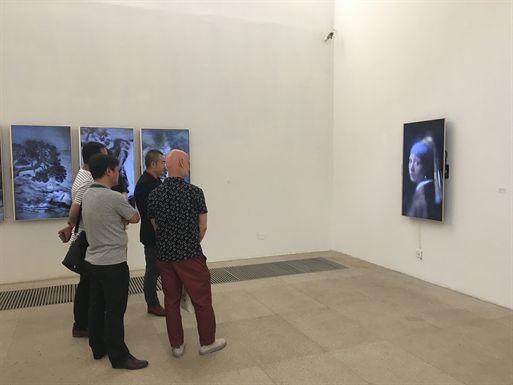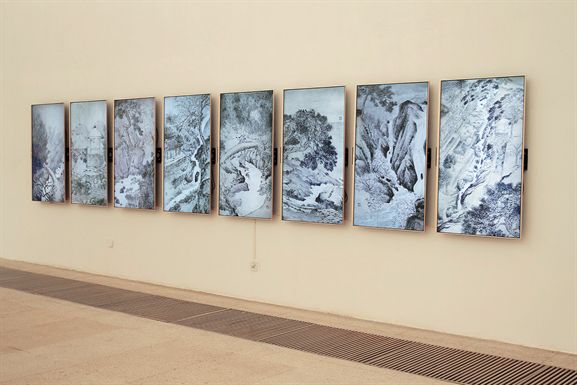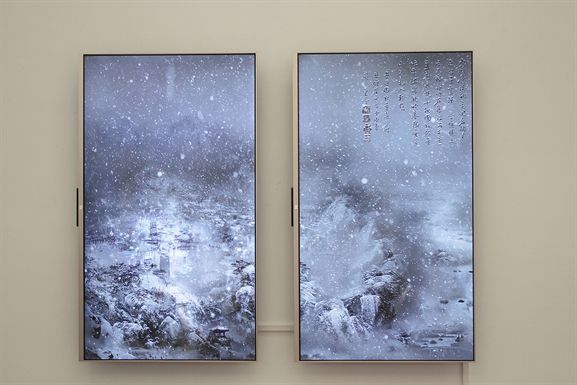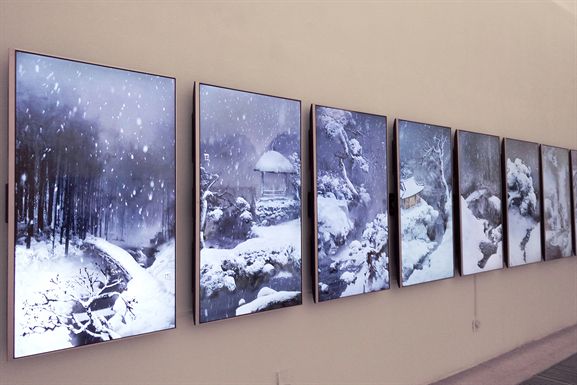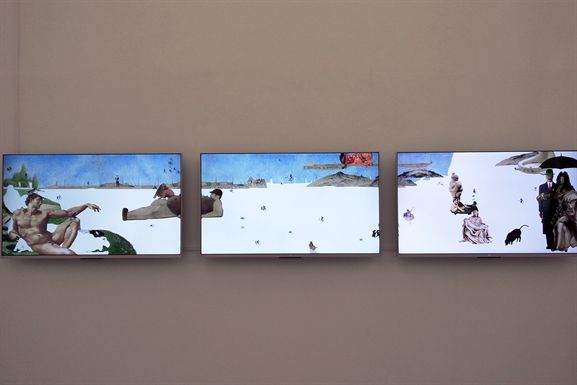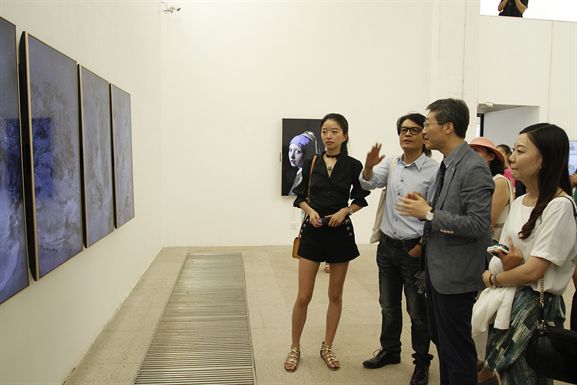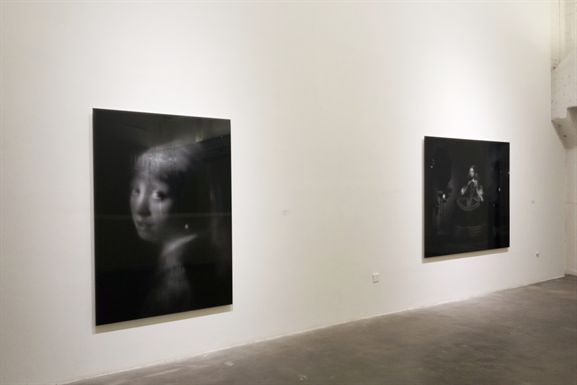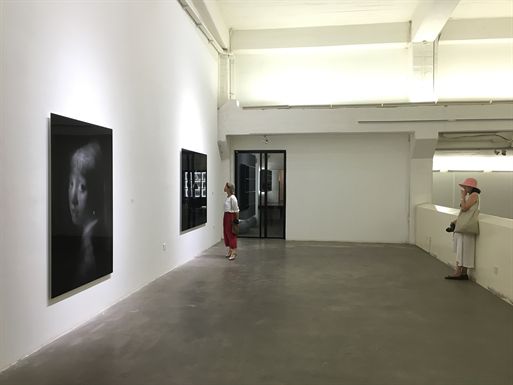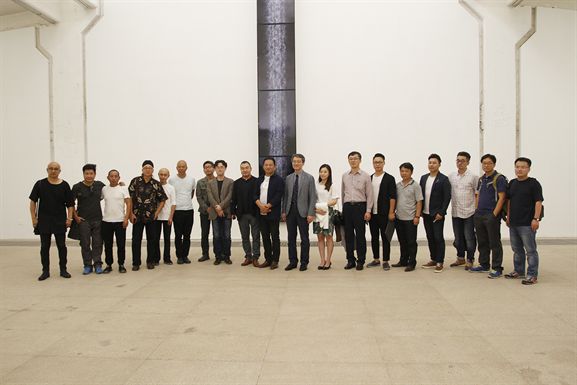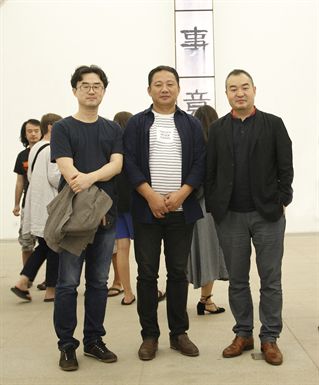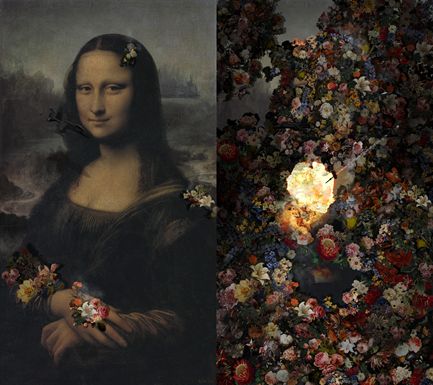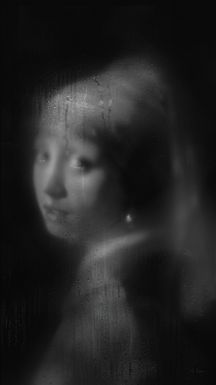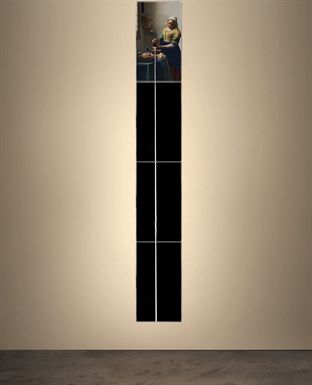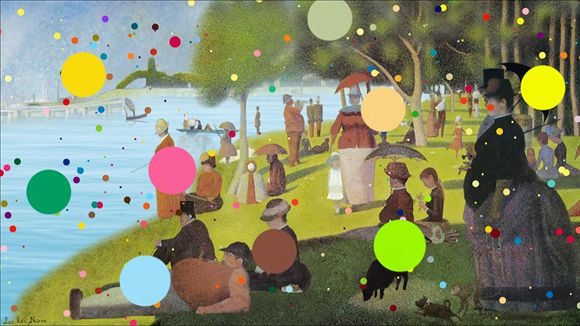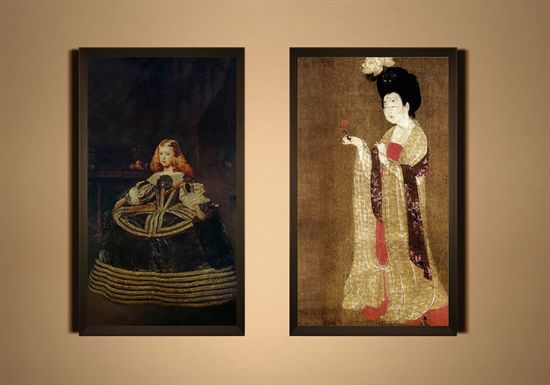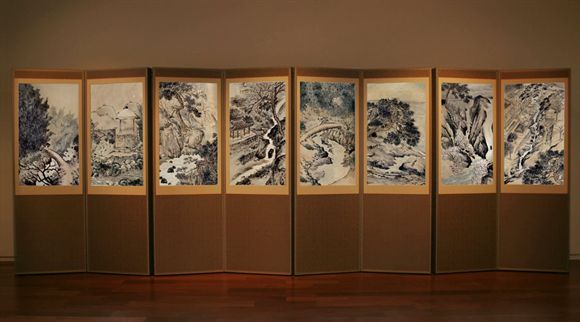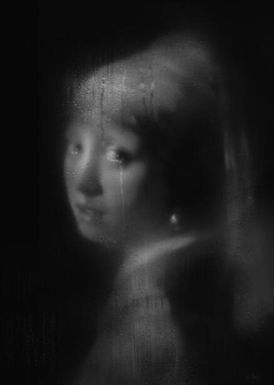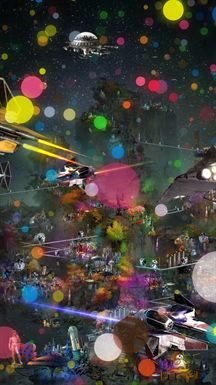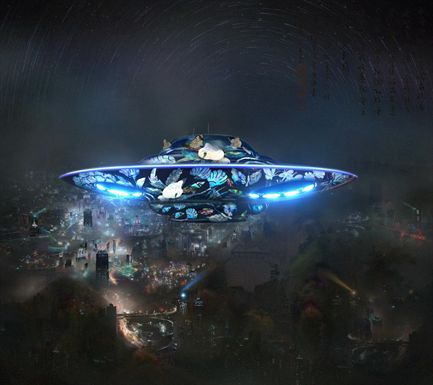Sep 10 - Oct 10, 2016
Press Release
The Signal of light [光的信号]
LEE LEE NAM introduces himself as a New Media artist. In the west, New media art in the 1990’s was a term used refer artworks produced with computers. The computer system transfers the entire information into ‘0’ and ‘1’ by the binary system which is then transmitted into a ON and OFF digital signal. About this we mention that we use a programmed algorithm. By using this programmed algorithm, interactions are formed with visitors, space and environment by sense and operation. However New media goes further past the borders of computer. Numerous medias, in other words, mass medias are introduced into art in diverse ways.
Many are familiar that it is impossible to discuss Media art without the artist Nam June Paik. Among the exhibited artworks of Paik’s first exhibition “Exposition of Music : Electronic Television” held in Parnass Gallery, Wuppertal, 1963, there was an art piece entitled ‘Participation TV’ which consists of 13 television sets. The television’s internal circuit was manipulated to distort the broadcasting image.
This was the first piece to be Paik’s media artwork. Most consider Media art as an artwork created through the encountering of technological instruments along with public taste and emotions which are manufactured through various medias. This technological aspect is only one part of the characteristics of the contemporary Media art.
If Nam June Paik was the first artist to introduce TV into Media art, Lee Lee Nam is an artist who extended the scope by melting his philosophy into the characteristics of Media art. In the special exhibition ‘Personal Structures’ of the 56th Venice Biennale, Lee’s work ‘Becomes Light’ was resonated with symbols and metaphors exhibited in a space not too large, becoming an artwork and a space at once. The installation work in the center using water and television was most impressive. The television slowly ascending and descending from and into the water seems to express humans caught inside frames or perhaps, the contemporary society. It reflects our self-portrait; trapped inside an impregnable fortress of stereotype called system. The electrically operated television breaks its strong fortress and descends into the incompatible water. This image gives great implication to us. Life and death, resurrection through ascendance deeply touches us in a way which goes beyond everyday life.
Lee himself mentions that he longs to follow the art world of Nam June Paik and success his artistic spirit. In the “Needs hierarchy theory of Abraham H. Maslow”, the most basic and one-dimensional desire is ‘physiological needs’ and ‘safety needs‘. After that comes ‘social needs’ and ‘esteem needs’. The final need is ‘self-actualization needs’. As we can see in the Needs hierarchy theory, Lee exceeds Paik whom he longs to take after and furthermore, motivates himself to accomplish self-realization.
The title of this exhibition is “The Signal of light”. Concerning the dictionary meaning; signal means to use the physical phenomenon of electricity, magnetism or light to store or send information. However, signals are used in more various type of ways in everyday life. Trivial gestures and gaze or even a simple verbal expression can be a method of communication. Through the genre of New Media art, the artist expresses his unique space through a visual energy which is a digitally projected light. Through this media and technology, he communicates by using the cultural and historical diversity of the East and West. Through the artworks of this exhibition, Lee desires to communicate with visitors through ‘Lee Lee Nam signals’ which exceeds basic communication tools through digital reinterpretation.
Lee Janguk
Curator Article
The Signal of light [光的信号]
LEE LEE NAM introduces himself as a New Media artist. In the west, New media art in the 1990’s was a term used refer artworks produced with computers. The computer system transfers the entire information into ‘0’ and ‘1’ by the binary system which is then transmitted into a ON and OFF digital signal. About this we mention that we use a programmed algorithm. By using this programmed algorithm, interactions are formed with visitors, space and environment by sense and operation. However New media goes further past the borders of computer. Numerous medias, in other words, mass medias are introduced into art in diverse ways.
Many are familiar that it is impossible to discuss Media art without the artist Nam June Paik. Among the exhibited artworks of Paik’s first exhibition “Exposition of Music : Electronic Television” held in Parnass Gallery, Wuppertal, 1963, there was an art piece entitled ‘Participation TV’ which consists of 13 television sets. The television’s internal circuit was manipulated to distort the broadcasting image.
This was the first piece to be Paik’s media artwork. Most consider Media art as an artwork created through the encountering of technological instruments along with public taste and emotions which are manufactured through various medias. This technological aspect is only one part of the characteristics of the contemporary Media art.
If Nam June Paik was the first artist to introduce TV into Media art, Lee Lee Nam is an artist who extended the scope by melting his philosophy into the characteristics of Media art. In the special exhibition ‘Personal Structures’ of the 56th Venice Biennale, Lee’s work ‘Becomes Light’ was resonated with symbols and metaphors exhibited in a space not too large, becoming an artwork and a space at once. The installation work in the center using water and television was most impressive. The television slowly ascending and descending from and into the water seems to express humans caught inside frames or perhaps, the contemporary society. It reflects our self-portrait; trapped inside an impregnable fortress of stereotype called system. The electrically operated television breaks its strong fortress and descends into the incompatible water. This image gives great implication to us. Life and death, resurrection through ascendance deeply touches us in a way which goes beyond everyday life.
Lee himself mentions that he longs to follow the art world of Nam June Paik and success his artistic spirit. In the “Needs hierarchy theory of Abraham H. Maslow”, the most basic and one-dimensional desire is ‘physiological needs’ and ‘safety needs‘. After that comes ‘social needs’ and ‘esteem needs’. The final need is ‘self-actualization needs’. As we can see in the Needs hierarchy theory, Lee exceeds Paik whom he longs to take after and furthermore, motivates himself to accomplish self-realization.
The title of this exhibition is “The Signal of light”. Concerning the dictionary meaning; signal means to use the physical phenomenon of electricity, magnetism or light to store or send information. However, signals are used in more various type of ways in everyday life. Trivial gestures and gaze or even a simple verbal expression can be a method of communication. Through the genre of New Media art, the artist expresses his unique space through a visual energy which is a digitally projected light. Through this media and technology, he communicates by using the cultural and historical diversity of the East and West. Through the artworks of this exhibition, Lee desires to communicate with visitors through ‘Lee Lee Nam signals’ which exceeds basic communication tools through digital reinterpretation.
李章旭(Lee Janguk)


